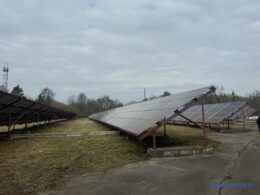In February 2025, Russian forces launched a drone strike that severely damaged the protective sarcophagus covering Chernobyl's fourth reactor, The Guardian reports.
The attack was carried out by a Russian drone, costing just €75,000, which led to an estimated €25 million in damage, according to preliminary reports from engineering experts. Fortunately, there were no radiological consequences from the strike, but the breach has raised concerns about the sarcophagus’s ability to withstand weather conditions in the long term.
Sergey Bokov, the chief engineer on duty at the time of the attack, described the initial shock, noting sensors recorded the impact resembling a 6-7 magnitude earthquake. However, the team quickly identified the drone as the reason, which flew low enough to avoid detection by radar systems. The attack left the sarcophagus exposed to the elements, increasing the risk of radiation leaks and water infiltration.
Despite these alarming risks, the Ukrainian Ministry of Environment has assured the public that radiation levels remain within safe limits and are under constant monitoring. However, experts like American engineer Eric Shiman, who worked on the sarcophagus design, stress that repairs are necessary to avoid further structural degradation. He estimates the repair costs could range from tens of millions to possibly hundreds of millions of dollars.
The European Bank for Reconstruction and Development (EBRD), which helped finance the construction of the sarcophagus, has acknowledged the severity of the damage and confirmed its involvement in the assessment process. A more detailed report on the full extent of the damage is expected in May 2025.
Beneath the damaged sarcophagus lies a highly radioactive mass, including 200 tons of uranium from the reactor and 5,000 tons of sand, lead, and boric acid that were dropped during the aftermath of the 1986 disaster. If the sarcophagus isn’t repaired, the integrity of this critical structure could continue to deteriorate, posing long-term environmental and health risks.
As the international community weighs in on funding the repairs, it’s clear that the cost of restoration far outweighs the expense of the drone that caused the destruction. For now, the focus is on preventing further harm and ensuring the safety of future generations.





